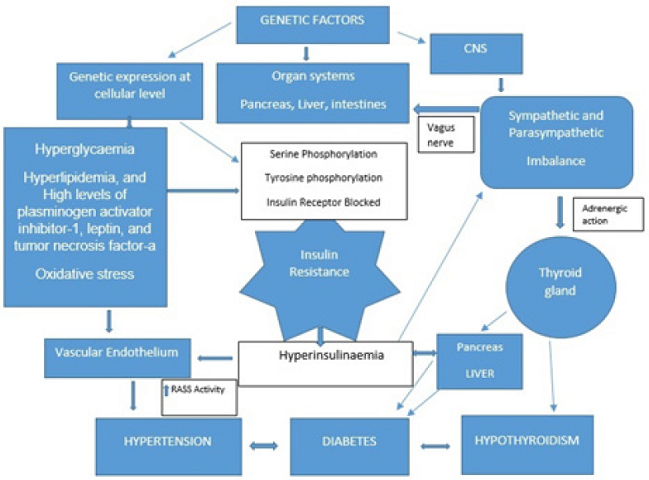Pregnancies Complicated by Diabetes, Hypertension and Hypothyroidism: Role of Insulin Resistance
Abstract
During recent times we are dealing with multiple medical complications occurring in a single pregnant woman. It is well known fact that insulin resistance is present during normal pregnancy and it is relatively diabetogenic state. In women with genetic predisposition, diabetes, hypertension and hypothyroidism complicate pregnancy resulting in increased maternal and perinatal morbidity and mortality. There was evidence in the literature regarding insulin resistance and gestational diabetes. This review analysed the literature regarding the association of diabetes, hypertension and hypothyroidism and found that there is a linkage between these three disorders in pregnant state and the insulin resistance develops by multiple molecular mechanisms both centrally and in peripheral tissues. The key mechanism is insulin receptor substrate-1 (IRS-1) which gets inactivated by serine phosphorylation and leads to hyperglycaemia which in turn leads to stimulation of beta cells of pancreas and leads to hyperinsulinaemia. Pancreas has thyroid hormone receptors and this stimulates the secretion of insulin leading hyperinsulinaemia. Hyperglycaemia leading to increase in free fatty acids and together with proinflammatory factors and reactive oxygen species causes endothelial dysfunction and hypertension. More studies are necessary to target insulin receptor to increase insulin sensitivity and prevent these disorders occurring together.






